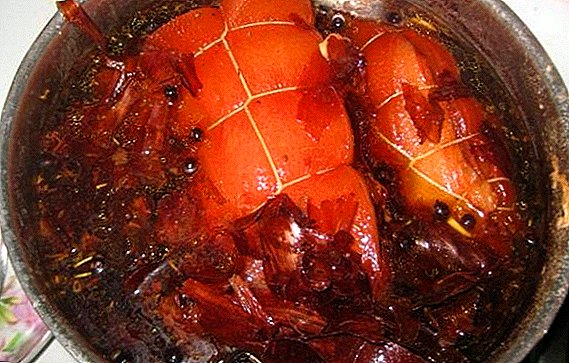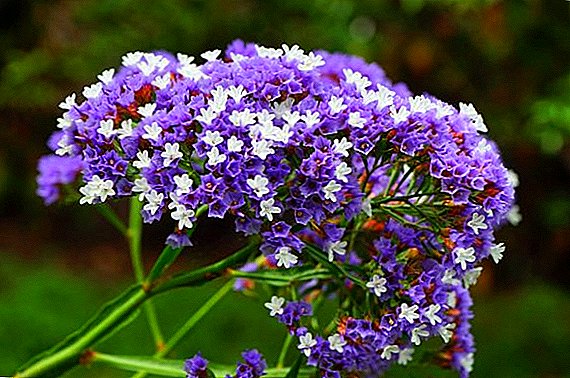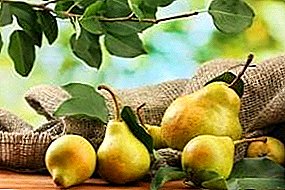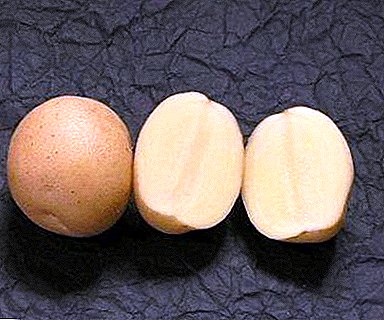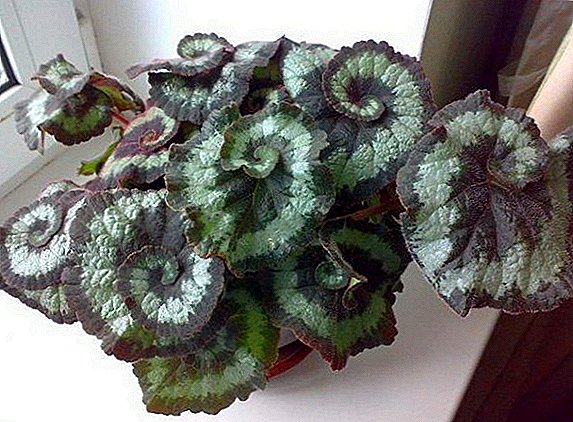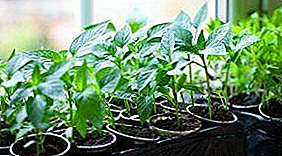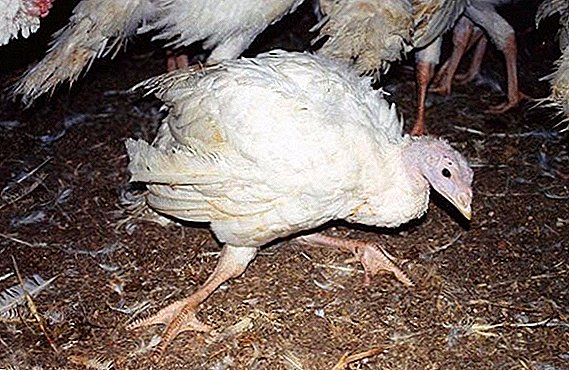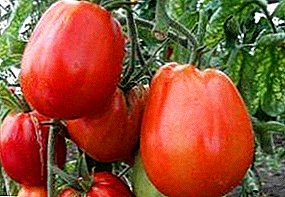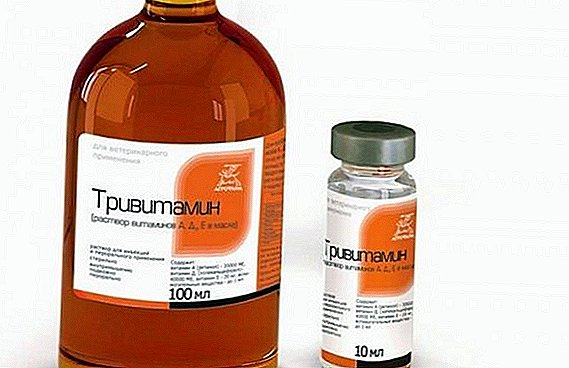 The health of poultry largely depends not only on a balanced feed, but also on timely treatment for diseases. This is especially true for young stockings: the inferior body of a young bird is more often susceptible to infection and defeat by viruses, as a result, beriberiosis occurs and immunity drops. In this article we will look at the effect of the drug Trivitamin: what this supplement is for and how to use it, whether it is possible to give the young, what are the contraindications and side effects.
The health of poultry largely depends not only on a balanced feed, but also on timely treatment for diseases. This is especially true for young stockings: the inferior body of a young bird is more often susceptible to infection and defeat by viruses, as a result, beriberiosis occurs and immunity drops. In this article we will look at the effect of the drug Trivitamin: what this supplement is for and how to use it, whether it is possible to give the young, what are the contraindications and side effects.
Description
The main purpose of "Trivitamin" - replenishing the lack of vitamins and minerals in poultry. The name of the drug itself suggests that it contains 3 essential vitamins, which are necessary for the health and normal functioning of goslings, chickens and turkey poults, A, D and E. 
This tool is a multivitamin (multicomponent) supplement that strengthens the immunity of chicks and increases the egg production rate of adults.
Learn how to increase egg production in chickens in the winter, turkeys, quails.
The drug is available in 2 forms: solution for injection and medicine for oral use. Since injecting poultry is quite troublesome (especially if we are talking about a large number of individuals), it is often the second form of the drug that is used.
"Trivitamin" looks like an oily substance - its smell resembles vegetable oil. The color of the liquid varies from light yellow to dark brown, it may have some oily clots.
In addition to the main 3 vitamins, the drug contains food ionol, santokhin and a small amount of soybean oil. The product is packaged in 10 or 100 ml, and the durable glass and aluminum cap reliably protect the preparation from external damage. 
Store "Trivitamin" should be at a temperature of up to 14 ° C, in a place protected from direct sunlight. Shelf life - up to 1 year from the date of production.
Important! The structure of "Trivitamin" does not include chemicals and genetically modified elements that may adversely affect the health of poultry - the manufacturer uses only natural ingredients.
Indications for use
This drug can be used both for the purpose of prophylaxis and in case of existing diseases in order to raise the immunity.
"Trivitamin" is recommended for:
- avitaminosis or hypovitoniasis of poultry;
- slow growth of young and fragile joints;
- poor egg production;
- weak appetite;
- low mobility of chicks;
- organ deformities;
- conjunctivitis;
- swelling of the limbs, rahitism;
- loss of feather cover;
- cold chicks, etc.

In addition, the drug can be used after the illness, during the rehabilitation period - this will significantly speed up the process of recovery of poultry.
Drug action
Strengthening the body's defenses and raising immunity is achieved with the help of vitamin E, which is an excellent antioxidant - it not only removes viruses and harmful substances from the body, but also regenerates damaged cells.
Vitamin A is responsible for protein synthesis and improves metabolic processes, and also controls the level of fat deposits - due to this, aging processes are slowed down.
Component of vitamin D is responsible for the area of proper formation of the bones of the bird: it is the control of the phosphorus level, increased calcium absorption, bone mineralization, improvement of the teeth strength. 
Due to the triunity of these vitamin components, a synergistic phenomenon is manifested - the strengthening of the effects of each other while taking (due to this, poultry can recover much faster than if these vitamins were used separately).
Thus, "Trivitamin" is not only an effective drug, but also an excellent preventive measure.
Did you know? The goose is the recognized long-liver among all domestic birds - at home it can live up to 35 years. In addition, the goose, together with the turkey, tops the ranking of the largest domesticated birds.
Rules for adding to feed
To "Trivitamin" had the desired effect, it is necessary to know the rules of adding it to the feed. First of all, it should be remembered that the oily preparation is not soluble in water, therefore, it cannot be added to water.
If not all individuals need a vitamin supplement, then a separate group of birds must be set aside from the rest of the birds. 
Basic rules for adding a drug to feed:
- Vitamin supplement is introduced into the feed directly on the day of feeding.
- Before adding to the main feed, "Trivitamin" is first well mixed with moist bran (moisture should be at least 5% - this contributes to a better absorption of the drug).
- Fortified bran is mixed with the main feed, and no later than within 1 hour, all this is fed to the bird.
It should be remembered that the feed with "Trivitamin" can not be subjected to any heat treatment (heat, steam), and add sugar to it - it will destroy the entire effect of the drug.
Important! Poultry products (meat, eggs) under the action of "Trivitamin" do not acquire any harmful substances - they are absolutely safe for human consumption.
Release form and dosage
The dose required for injection of "Trivitamin" or oral treatment varies somewhat - it differs in the type of poultry and in the number of heads in the pack. 
For chickens
Basic provisions for the use of "Trivitamin" for chickens:
- Preventive injection is carried out at the rate of 0.1 ml per 1 specimen, intramuscularly or subcutaneously. Enter the drug 1 time per week, and the entire course is up to 6 weeks.
- When treating diseases, the medicine is given orally - injection is more often used as prevention.
- For chickens of egg and meat breeds up to 8 weeks of age, the dosage in the treatment of diseases is 1 drop per 2-3 heads (in the treatment of each individual, drops are introduced separately into the beak of the sick chicken).
- For a bird from 9 months - 2 drops on 1 head.
- Broilers are given 3 drops per 1 individual.
The egg breeds of chickens include such as high-line, broken white, white leggorn, Hamburg, grünleger, and meat - pomfret, Hungarian giant, hercules, Jersey giant, kohinhin.
With group treatment of chickens under 4 weeks of age, the dosage is 520 ml per 10 kg of feed. The additive is introduced into the feed daily for 1 month, then the drug is transferred to the weekly prophylactic regimen. 
For poults
Rules for the use of "Trivitamin" for poults:
- prophylactic injection is also carried out once a week, but the dosage is increased - 0.4 ml per individual;
- oral prophylaxis of turkey poults is carried out at the rate of 1 drop per 3 heads (or 15 ml per 10 kg of feed);
- When treating a disease, each turkey in a beak is instilled 6-8 drops, while the course of treatment is 4 weeks.
Repair young turkeys, grown in large quantities on poultry farms and not having access to walking in open space, are prevented at the rate of 5.1 ml of the preparation per 10 kg of feed. 
For goslings
The treatment of goslings is as follows:
- chicks up to 8 weeks - 7.5 ml of the drug per 10 kg of feed;
- goslings older than 8 weeks - 3.8 ml of the medicine per 10 kg of the main feed;
- in case of individual use, 5 drops are administered to each goose;
- injection takes place in this dosage: 0.4 ml per 1 individual.
Preventive drug intake for goslings is much less common than for chickens, because goslings, as a rule, have access to fresh grass, from where they can get the necessary vitamins and minerals.
Nevertheless, if necessary, it is possible to give vitaminized food and goslings for preventive purposes - no more often than 1 time in 10 days. 
For other varieties of young stock
This vitamin is also used for quails, ducks, guinea fowls and pheasants - the manufacturer recommends that you follow the dosage specified in the instructions for each preparation:
- for quails and guinea fowls, prophylactic injection is carried out at the rate of 0.4 ml per specimen;
- for pheasants - from 0.5 to 0.8 ml per 1 individual (a detailed calculation for each species of bird is given in the instructions).
Did you know? Roosters and chickens are the most common agricultural and poultry - in the world there are more than 20 billion individuals. In addition, the first domesticated bird in the history of mankind is the chicken - evidence of this is the ancient Indian sources dating back to the 2nd millennium BC. e.
How to apply for adult birds
The dosage for an adult individual is significantly different from the dosage for chicks: prevention of adult birds is made at the rate of 1 drop per day for each unit. For group feeding, the calculation is as follows: for chickens and turkeys - 7 ml per 10 kg of the main feed, for ducks - 10 ml per 10 kg, geese - 8 ml per 10 kg. 
Remember: if ducklings, goslings and turkey poults are not kept in the conditions of the poultry farm, but have daily walking and access to fresh grass, then it is not necessary to give “Trivitamin” as a preventive measure for them - otherwise hypervitaminosis can occur with a glut of vitamins and as a result, a number of diseases associated with this phenomenon (itching, food poisoning, etc.).
Contraindications and side effects
Natural drug "Trivitamin" has no contraindications - it is absolutely harmless to poultry. Nevertheless, in rare cases, it can cause a slight itch (with individual intolerance to the components of the drug).
Side effects are also not identified - except in cases of overdose with vitamin D (for example, if the chick receives a balanced feed with a large calcium supplement and also consumes "Trivitamin") - in this case, vomiting, impaired stool and weakness are possible. 
In case of overdose, the drug is stopped and the remedy for symptomatic treatment is prescribed to the chick.
"Trivitamin" is a complex drug that solves a number of problems associated with unbalanced nutrition and deficiency of minerals and vitamin substances in birds. It has the highest degree of safety for poultry, is absolutely harmless, and therefore will be a good helper not only for novice poultry farmers, but also experienced farmers.



